

Information about some of the work that has taken place on our units at Pentrefelin (Llangollen) and Butterley (Midland Railway) since the previous report can be found in the 'Unit-specific work' section below.
The 2-car class 108 unit made its debut for the 2024 season by providing the Berwyn Shuttle service last Saturday and Sunday (16-17 March).
Many small precut pieces of wood were drilled and fastened to various metal bits of the wall supports...
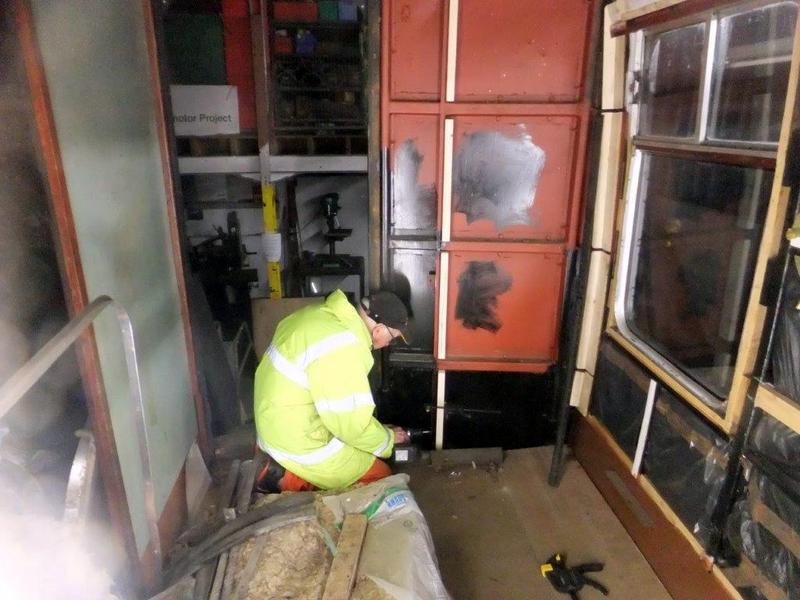
The following picture shows one of six panel supports fitted. The panel will sit on the top edge of the wood...
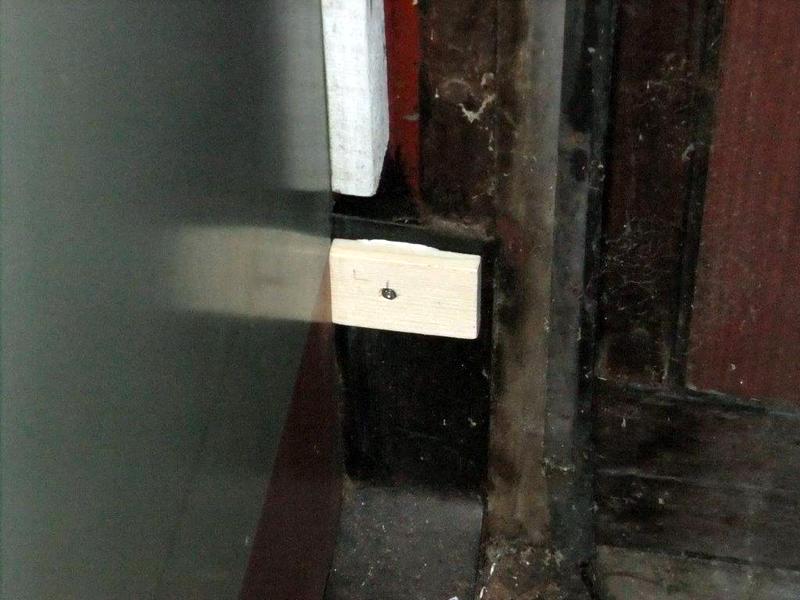
Also the first pieces of hardwood beading were cut to size and drilled, prior to being taken away for staining and varnishing as homework, and a small timber piece was fastened to the side panel on the secondman's side for the ceiling to fit against.
Following the installation of the final piece of 54504's corridor connection - namely a rubber mat that was commissioned with some dusty footprints - the two halves of the unit were coupled together and it was prepared for action on the Berwyn Shuttle service (see 'Out and About' above).
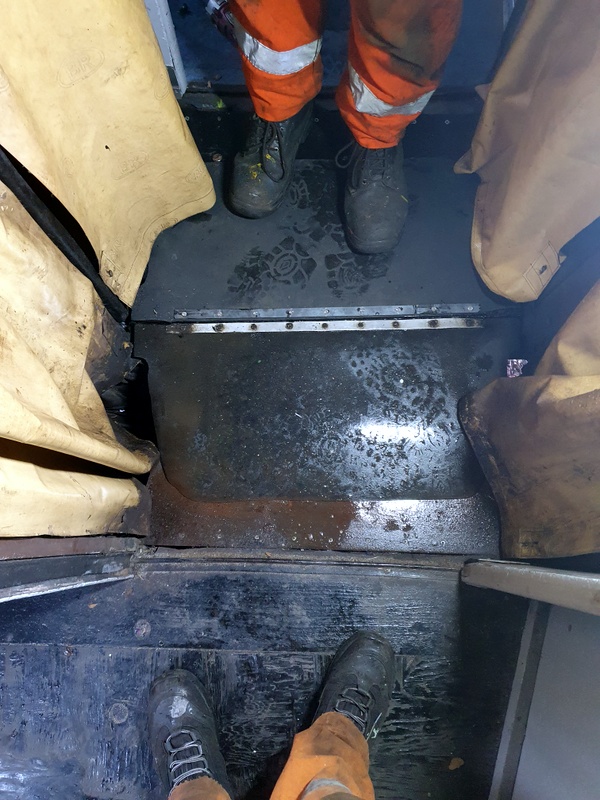
The unit is currently undergoing an 'M' exam (the most complex exam that we carry out) and also the continuation of a project to make improvements to its brakegear. At our most recent meeting, work was largely concentrated on the latter with the removal of the vacuum cylinder from the no. 1 bogie of the trailer car and the removal of various items of associated brakegear.
The vacuum cylinder was removed using the trolley jack plus adapter that was devised last year and successfully used to remove the cylinder from the other bogie, although this time there was some difficulty in persuading the trolley jack and cylinder to fit under the bogie frame on their way to the outside world...
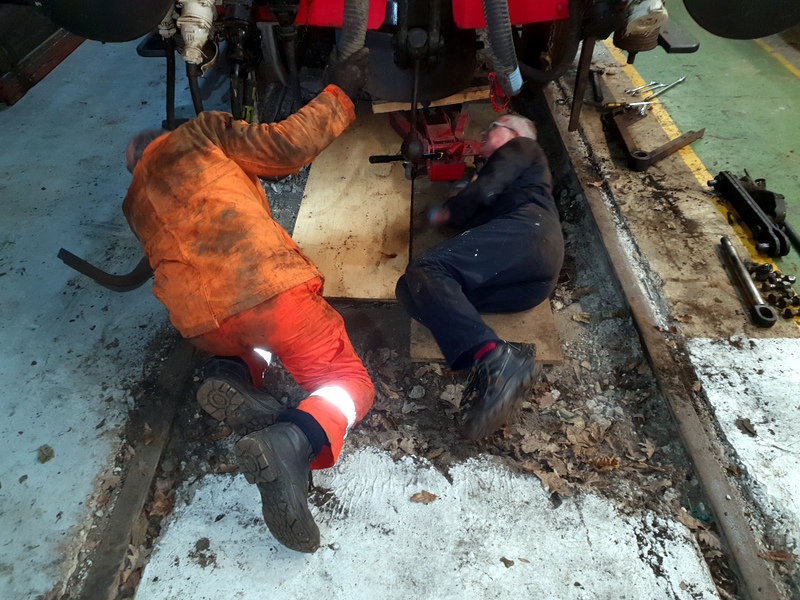
Once that had been accomplished, the cylinder was placed on the special stand that facilitates convenient maintenance and testing prior to it being stripped down...
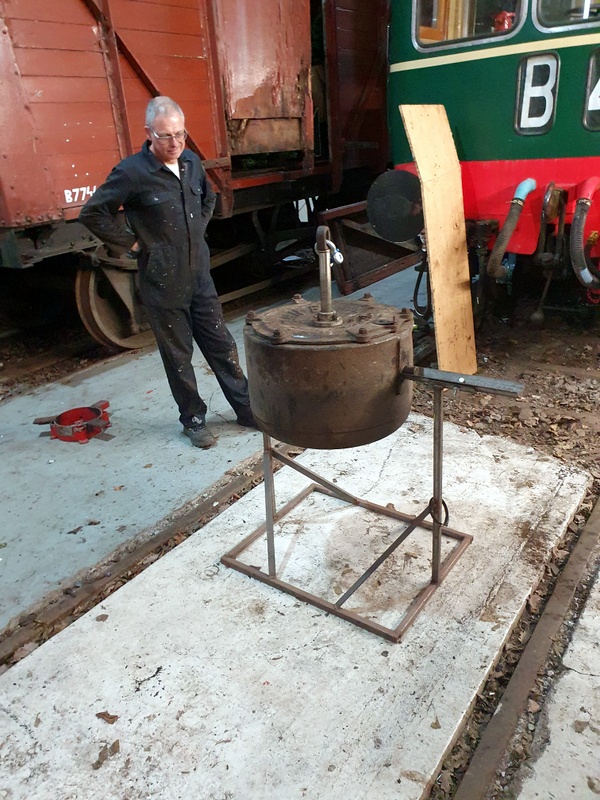
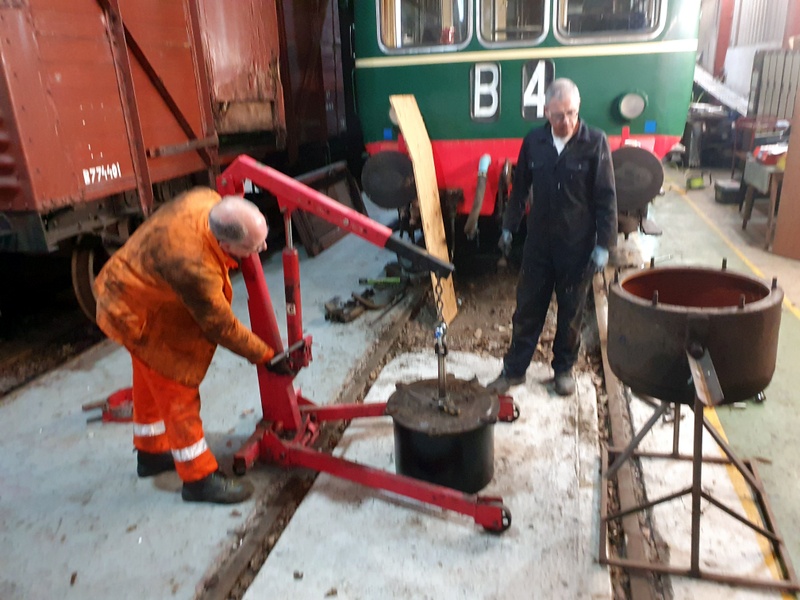
Apologies for the slightly blurred nature of the above image. The people concerned were presumably working extra hard/fast at the time. Perhaps it was getting close to lunchtime?
Some components that were in poor condition were replaced, including the rolling ring (the device that provides an airtight seal around the piston) and the bronze piston rod guide bush, and various other components were cleaned.
After the cylinder had been reassembled it was tested by first of all using the class 108 as a 'donor' to create the required vacuum in the 'top side' and then making the equivalent of a full brake application by allowing air at atmospheric pressure on to the underside of the piston. The difference in pressure resulted in the piston moving up and, as a way of preventing it from doing so in an alarming manner, a calming load of four brake blocks had been fastened to the end of the piston rod...
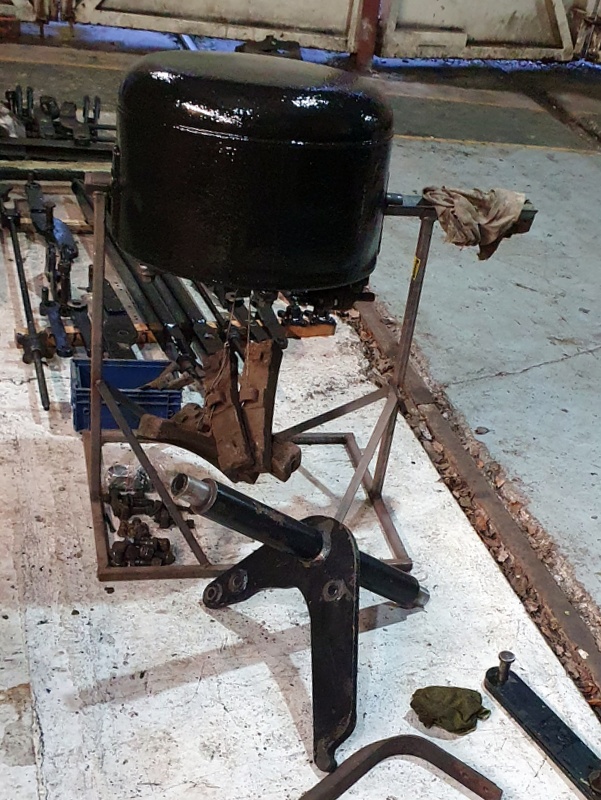
Once the blocks had been lifted into the air, it was time to test the quality of the airtight seals within the cylinder and see how long they stayed there. Over a period of time the pressures between the top and bottom parts of the cylinder will gradually equalise and the load will find its way back on to the floor. The longer that takes the better the outcome so the fact that there was no noticeable difference after 24 hours was very pleasing. Having passed the test with flying colours the cylinder will be reinstalled under the vehicle during our next visit.
The dismantling and removal of the associated brakegear produced quite a collection...
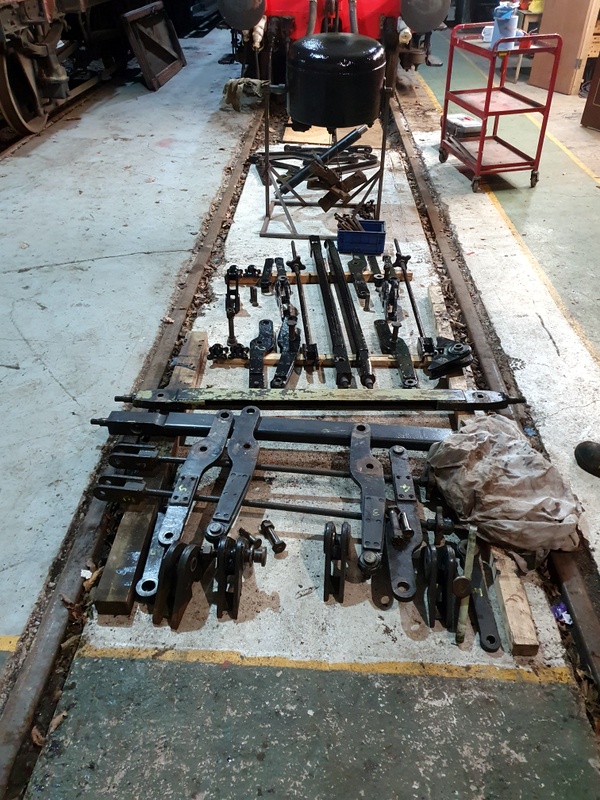
Each of those components will be examined and then cleaned/repaired/painted as required.
The beading that had been cut and drilled at the last meeting was temporarily fitted. This had been stained and varnished as homework, but had to be removed after the rest of the beading had been cut and drilled. This beading acted as a datum line/point for the rest of the beading. The reason for the removal was because of a problem with the varnish which will require sanding back and a new coat applied.
The following picture shows some of the beading in place with the new beading also getting processed...
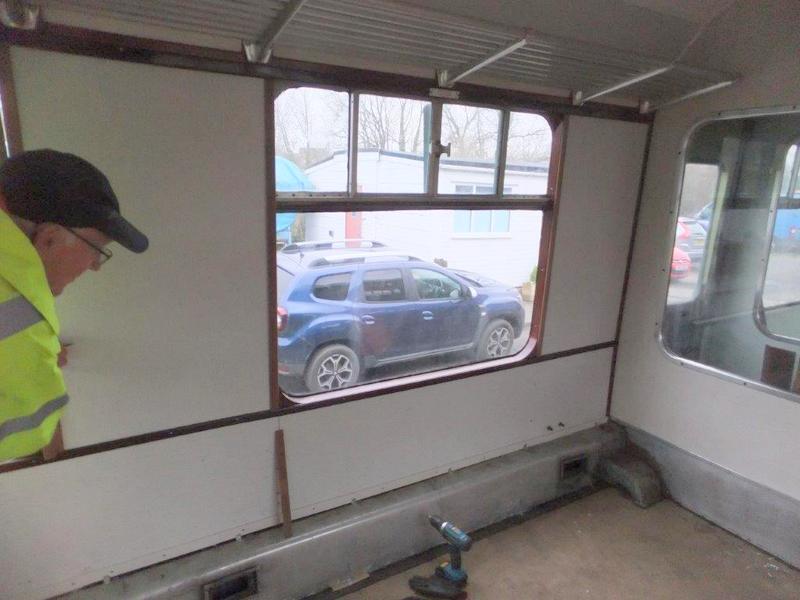
Other work included measuring the cab windows in both the power car and the trailer car in order to generate a cutting list for the required woodwork.
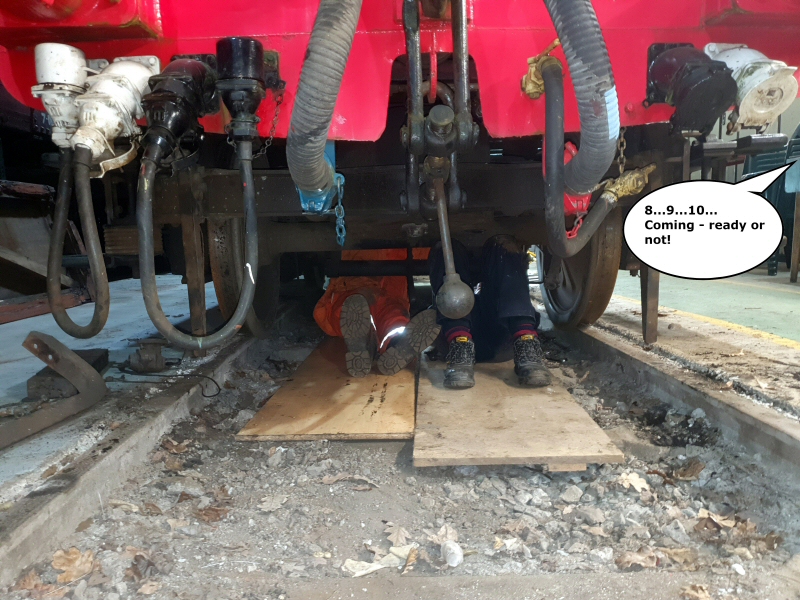
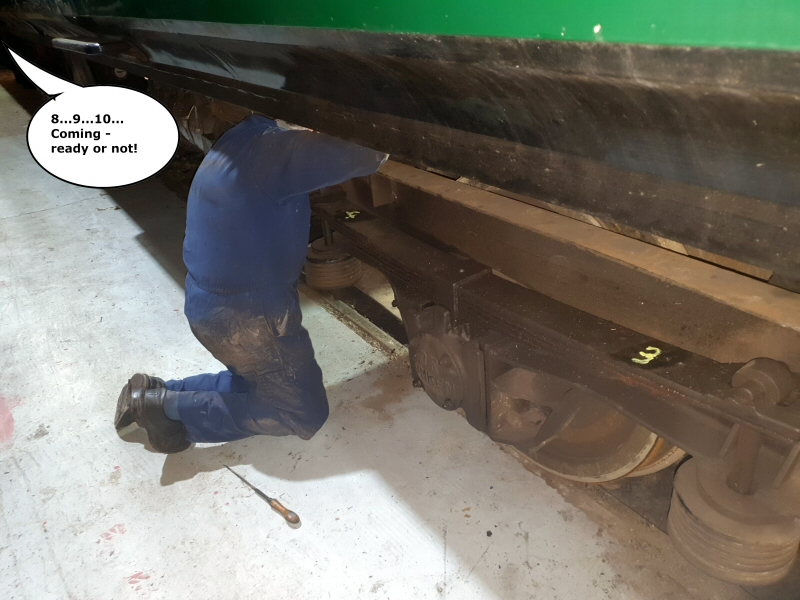
Thanks to Allen Chatwood and John Joyce for supplying the pictures that were used in this edition.